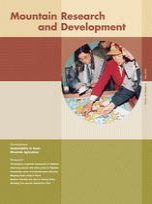A bioclimatic model was used to simulate distributions of the dominant tree species on the Tibetan Plateau. The model is based on physiological constraints to alpine plant growth. The bioclimatic variables used in this model are: minimum temperature in the coldest month, maximum temperature in the warmest month, accumulated growing-season warmth, and minimum value of soil moisture availability in the growing season. A comparison was made between simulated current distributions of tree species and their actual natural distributions on the Tibetan Plateau. It was shown that there is good agreement between simulated current and actual natural distributions. The simulated current distribution areas of tree species such as Abies spectabilis, Picea likiangensis var. linzhiensis, Pinus densata, Larix griffithiana were a little larger than their actual distributions. For Quercus aquifolioides and the relict species Betula platyphylla, simulated areas were a little smaller than their actual distributions. Future distributions of dominant tree species were predicted under a climate scenario with a CO2 concentration of 500 ppmv in the year 2100. The distribution areas of Abies spectabilis, Picea likiangensis var. linzhiensis, Pinus densata, Larix griffithiana and Quercus aquifolioides would shift and extend towards the north and west under the future climate scenario. For Betula utilis, the distribution areas would shift towards the north but they would shrink.
How to translate text using browser tools
1 May 2004
Distributions of Dominant Tree Species on the Tibetan Plateau under Current and Future Climate Scenarios
Minghua Song,
Caiping Zhou,
Hua Ouyang

Mountain Research and Development
Vol. 24 • No. 2
May 2004
Vol. 24 • No. 2
May 2004
Bioclimatic model
China
dominant tree species
future climate scenario
Tibetan plateau
tree distribution




